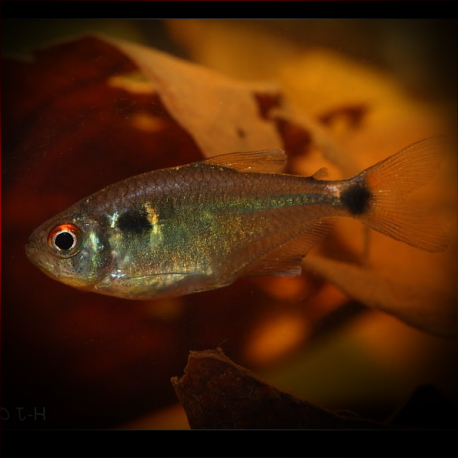More info
Datasheet
| Minimum Tank Size | 70 litres / 18.49 US gallons |
| Maximum Size | 4.5cm / 1.77inches |
| Temperature | 24°C / 75.20°F - 28°C / 82.40°F |
| Hardness | 5-20ºdH |
| pH | 5.5-7.5 |
General Description
The Head-And-Tail Light Tetra, also known as the beacon tetra, is a popular and ubiquitous species in the aquarium trade due to its hardy nature and vivid colors. Selectively bred forms like the albino variant exist, while taxonomically it falls under the uncertain status of Hemigrammus. Typically reaching sizes of up to 4.5cm, this tetra is a staple for beginners in the fishkeeping hobby.
Aquarium Setup
The Head-And-Tail Light Tetra thrives in a slightly acidic pH environment and showcases its best colors in lower gH ranges. While adaptable to various tank conditions, it flourishes in heavily-planted tanks and biotope setups mimicking its natural habitat. To enhance its appearance, opt for river sand substrate with driftwood, twisted roots, and dried leaves to replicate a natural feel. Dim lighting and the addition of aquarium-safe peat in the filter can further simulate black water conditions.
Behaviour
This tetra species is known for its lively and colorful presence, making it an excellent addition to a community tank. It coexists peacefully with a variety of fish species, including livebearers, danios, rasboras, certain cichlids, and bottom-dwelling companions like Corydoras. Being a shoaling species, it thrives in groups of at least six individuals, where its social behavior and aesthetics shine through.
Feeding and Diet
The Head-And-Tail Light Tetra is easy to feed, accepting a wide range of offerings. To maintain optimal health and vibrant colors, provide a diet consisting of small live and frozen foods such as bloodworms, Daphnia, and brine shrimp, alongside dried flakes and granules. Regular feeding sessions ensure the well-being of these tetras in the aquarium.
Reproduction & Dimorphism
Reproducing this tetra species can be relatively straightforward with proper setup and conditions. Breeding necessitates separate tanks with dim lighting, fine-leaved plants, or mesh for egg deposition. Sexual dimorphism includes differences in swim bladder shape and body size, aiding in sex identification. Adult females tend to be larger and heavier-bodied than males, with distinct characteristics during the breeding process.
Habitat and Distribution
Natively found in slow-moving rivers, tributaries, and floodplain lakes across regions of South America, the Head-And-Tail Light Tetra has a relatively wide distribution. While wild populations are less common due to commercial breeding, these tetras remain prevalent in the aquarium trade, originating mostly from Eastern European breeders.

